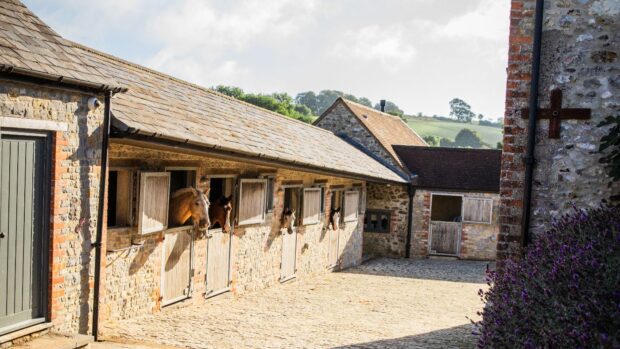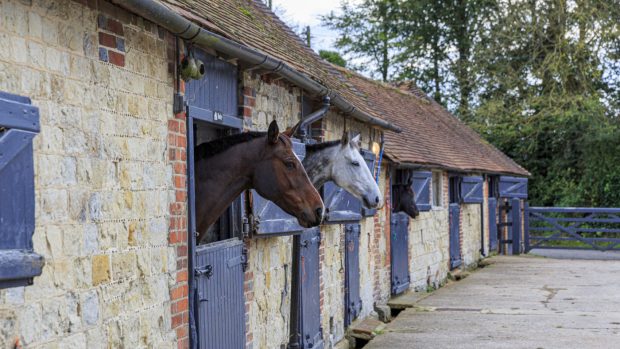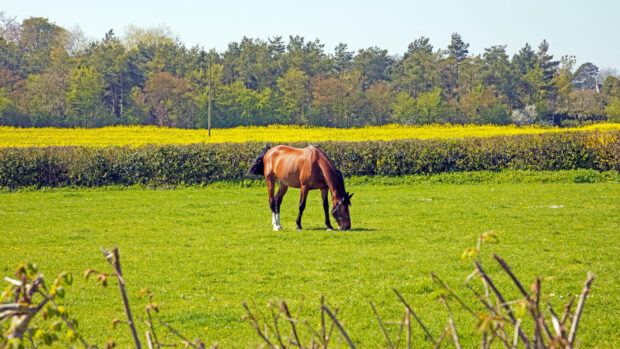Scientists have calculated a way of measuring the estimated carbon footprint of sport horses.
The project was carried out by Wageningen University & Research in partnership with the European Equestrian Federation (EEF). The team worked with stables in Sweden and the Netherlands to understand the amount of greenhouse gas emissions for which horses at different stages in their lives and across disciplines are accountable.
The idea behind the project is to understand the situation, to make changes in a sustainable way.
“Hoofprint can calculate greenhouse gas emissions from equines and with that, you can identify the emission hotspots,” said researcher Iris Huisman, speaking on an EEF webinar.
“One of the take-home messages is that it is important to know what the impact is before you can actually do something about it. Otherwise, you don’t really know what you’re changing or making improvements to.”
Ms Huisman explained that feed production, transport and manure came into the equation and gave some examples of how the percentage from each when calculating a horse’s carbon footprint can change over the course of his life.
For a yearling, feed makes up the majority (59%) of their carbon footprint – for a jet-setting sport horse competing internationally, this shifted to transport (90%).
The intention is for this information to be made available to national federations, and the EEF is looking into whether it can be made available on a central site. When ready, users will be able to see hotspot areas and how making changes to things such as transport or ingredients in a horse’s diet can affect the footprint.
Nat Waran, chair of the FEI-created equine, ethics and wellbeing commission, followed the presentation by explaining how and why it is important for the horse world to take note.
“We live in a very changing world and certainly whatever aspect of the equestrian world we look at, we’ve got to recognise that we look at it within a world context or global context,” said Professor Waran.
“What was thought impossible is no longer necessarily so, but also what was deemed acceptable previously may not be necessarily so.”
Prof Waran highlighted that although there is currently much discussion around welfare and ethics of horse use, she expects to see a rise in questions around environment and sustainability “if we don’t move swiftly” to address them.
“If you look at Gen Z, you can see that if they’re asked about the food system in future, what they’re interested in is more information and improvements in animal welfare, reducing environmental impact, more sustainable production, all those sorts of things,” she said.
“These things matter to our future equestrians.”
Prof Waran summed up how the whole picture of welfare and sustainability is interlinked. She gave the example of how the equine obesity crisis has direct links to the environment, with the increased carbon footprint related to excess feeding.
“Small steps can make a big difference. Small steps, particularly around sustainability, relate to things that we can actually do as individuals, obviously with the right information, to be able to replace some of the things that we do, reduce others, perhaps reuse some of the resources that we take advantage of and certainly recycle.
“When we look at responsible equestrianism, we’re talking about these two pillars at the moment – being able to demonstrate that we have a minimal environmental impact as we enjoy our sport, but also being able to be welfare-centric.”
She added that human behaviour change expertise has to be a part of the picture “to understand why humans do things and what will drive them to change, so we can help them to make more sustainable change”.
“That’s going to benefit the welfare of the horse and the welfare of the planet,” she said. “Changes have to be sustainable across the whole equine industry, not just one portion of it, not just Europe, or countries within Europe, but wider too.”
- For owners wanting to get an idea of their horses’ carbon footprint, insurers Agria has launched a free-to-use online carbon calculator at agriacarboncalculator.co.uk/horses/
You might also be interested in:

Subscribe to Horse & Hound magazine today – and enjoy unlimited website access all year round

Equestrians must act as ‘guardians of the landscape’ to reduce environmental impact

‘This will help you’: why caring for the environment is vital for the equestrian industry
Horse & Hound magazine, out every Thursday, is packed with all the latest news and reports, as well as interviews, specials, nostalgia, vet and training advice. Find how you can enjoy the magazine delivered to your door every week, plus options to upgrade your subscription to access our online service that brings you breaking news and reports as well as other benefits.




